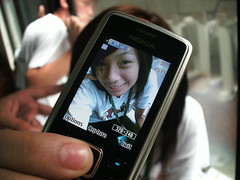I left off in the last post with the intention of testing if the use of cellphones in teaching contributed positively towards student learning. So here’s the simple experiment I designed.
First, a week after I exposed the class to the cellphone exercise in trying to answer the question “what is the mechanism of action of cyanide’s toxicity” via text message, I posed them the same question again. Only this time, they could not use their cellphones – they had to personally know the answer at that moment. The result is that four people out of 24 students answered the question correctly.
I approached these four people to ask the follow-up question: “Where and when did you learn this fact about cyanide?” Of the four people who answered the question correctly, two of them were the students who had successfully completed the cellphone activity last week, one was someone who independently looked up the answer because of her exposure to the question in last week’s cellphone activity, and the last person was someone who knew the answer from a previous course.
 So here is how I interpret this data in combination with last week cellphone data.
So here is how I interpret this data in combination with last week cellphone data.First, let’s examine the people who successfully accomplished the cellphone task last week and let’s see if their accomplishment from last week affected their learning. Of the two students who accomplished the cellphone task last week both were able to correctly answer the question regarding the mechanism of action of cyanide one week later. Both students identified the previous week’s cellphone activity as being the time and method that they learned this answer. So for 100% of these students, success with the previous week’s cellphone activity did indeed contribute positively to their learning. They demonstrated this by retaining this knowledge for the period of at least one week.
Second, let’s examine the student who did not successfully complete the previous week’s cellphone activity yet was stimulated by the activity to a great enough extent where she independently researched the answer and was able to demonstrate her knowledge one week later. Did the cellphone activity affect her learning? YES! On the surface this sounds quite positive doesn’t it? However, there were 19 other people in the class who where not stimulated by the activity to a great enough extent to independently research the answer as she had. So for 1 out of 20 (or 5%) the activity stimulated their learning despite being unsuccessful with the cellphone activity. For the other 95%, there was no positive impact.
Third, the student who previously knew about the mechanism of action of cyanide was unaffected by the activity – he already knew the answer.
So taken together, despite a very small sample size, there is a suggestion that cellphone use in the classroom might positively affect learning. Maybe just enough of a suggestion that further investigation on the subject is warranted. What do you think? Please leave a comment below.
 Eric's ramblings, experiences and random thoughts about e-Learning, distance education and Educational Technology.
Eric's ramblings, experiences and random thoughts about e-Learning, distance education and Educational Technology.







